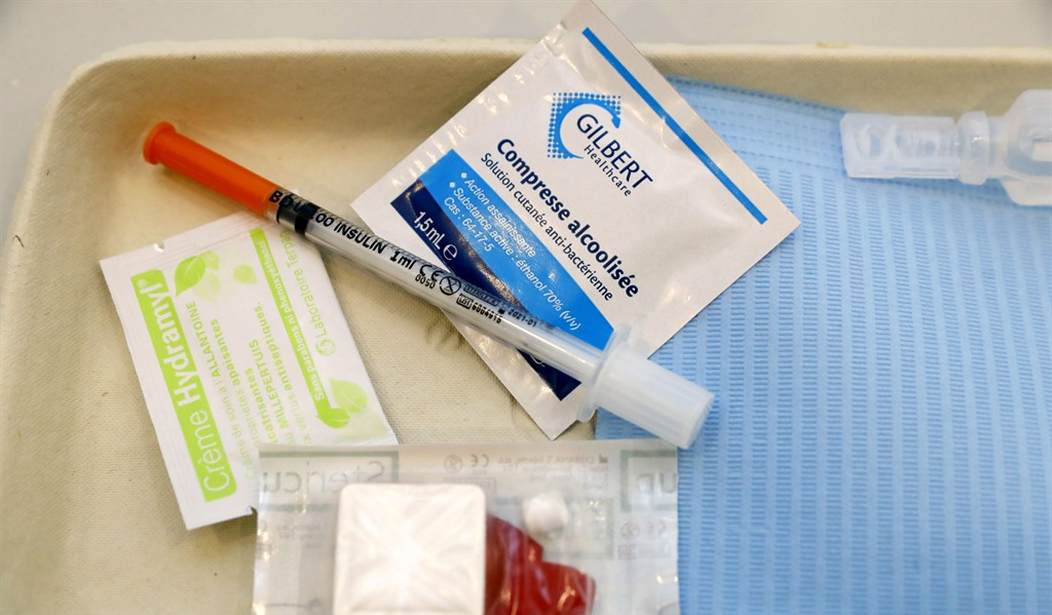Last year, more than 100,000 Americans died of a drug overdose. The overwhelming number of those overdoses were due to opioids.
The two drugs most often cited by experts as particularly dangerous are heroin and fentanyl. Most users eventually get around to injecting those drugs, which could lead to death given the varying dosage and different additives that addicts use to increase their high.
New York City is beginning a pilot program to try and decrease the number of overdose deaths. “Safe injection sites,” which have existed for years in Europe, Canada, and Australia, have been approved in the city. Drug addicts bring their own drugs to the site and are given clean needles and a clean place to shoot up. They are monitored by professionals for signs of an overdose.
While there is some evidence that these safe injection sites save lives elsewhere, what is the moral cost to a big city putting its imprimatur on what is still illegal behavior?
The U.S. Justice Department declined Tuesday to comment on New York City’s plan, which is placing supervised injection sites at existing syringe exchange programs. City Health Commissioner Dr. Dave Chokshi said they were open as of Tuesday.
Supervised injection sites don’t sell drugs — users bring their own — but generally have monitors who watch for signs of overdose and can administer an antidote if needed. Chokshi suggested the facilities also would offer people referrals to drug treatment and other services and “bring people in from the streets, improving life for everyone involved.”
And then there’s the question of whether the sites really work as far as saving people from overdoses?
Keith Humphreys, an addiction researcher and psychiatry professor at Stanford University, says a stronger evidence base is needed.
“Nobody should be looking at this literature making confident conclusions in either direction,” he says.
Humphreys says he’d welcome better tools to address the drug crisis. He doesn’t think the available evidence points to supervised injection as being harmful, but the research has not strongly demonstrated an overall reduction in overdose deaths over time.
Indeed, the scant evidence collected so far shows that overdoses are reduced in the area around a safe injection site, but does it really make a difference?
Recommended: Biden Is Bullying Businesses Over His Own Policy Failures
Addicts are notorious for refusing any help at all. Even in the midst of an overdose epidemic, how many addicts would take advantage of a safe injection site to shoot up? Besides, most addicts don’t even live on the street and already have a “safe” place to inject their drugs. Those who need the sites the most may not even take advantage of them.
There is some indication of increased crime in the neighborhood around the injection sites, as the first thing on an addict’s mind when they leave those sites is getting another fix. This has led some communities — including in the Seattle area — to try to ban them.
The New York City injection sites will be housed in needle exchange locations. It’s part of a general push by public health officials in “harm reduction” — a philosophy that, according to Harm Reduction International’s website, “aim[s] to minimize negative health, social and legal impacts associated with drug use, drug policies and drug laws.”
Minimizing the health impacts of illegal drug use would be simple: don’t use illegal drugs. As for the rest, we shouldn’t be hopeful.
Harm reduction encompasses a range of health and social services and practices that apply to illicit and licit drugs. These include, but are not limited to, drug consumption rooms, needle and syringe programmes, non-abstinence-based housing and employment initiatives, drug checking, overdose prevention and reversal, psychosocial support, and the provision of information on safer drug use. Approaches such as these are cost-effective, evidence-based and have a positive impact on individual and community health.
Of course, everyone would love to live next to a drug addict or work with someone as high as a kite. No problem there.
In fact, there’s a reason for a social stigma for drug addiction: innocent people end up getting hurt. And a city encouraging drug use by giving addicts a “safe” place to inject their drugs might save a few lives from drug overdoses, but how many more lives will be ruined?










Join the conversation as a VIP Member